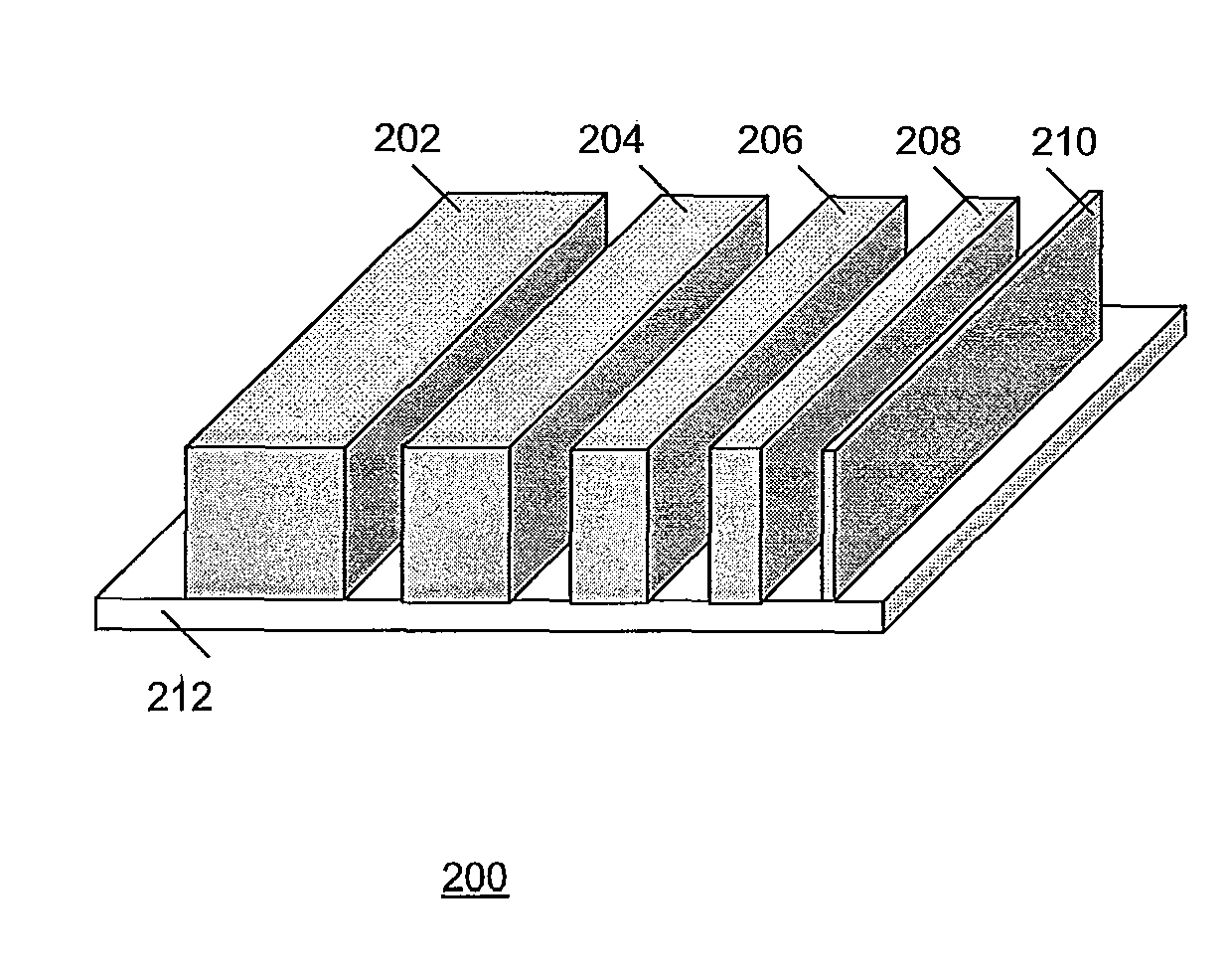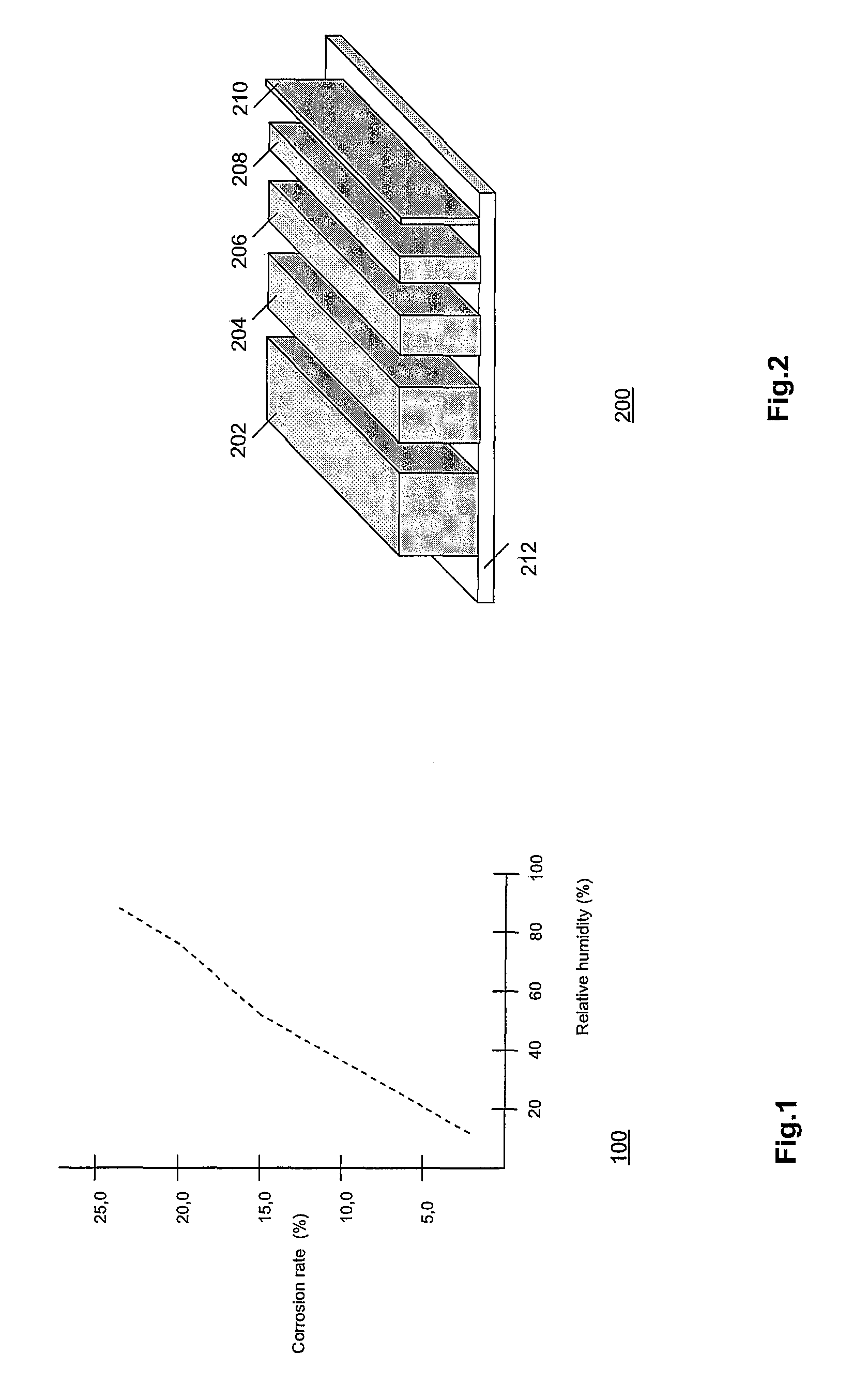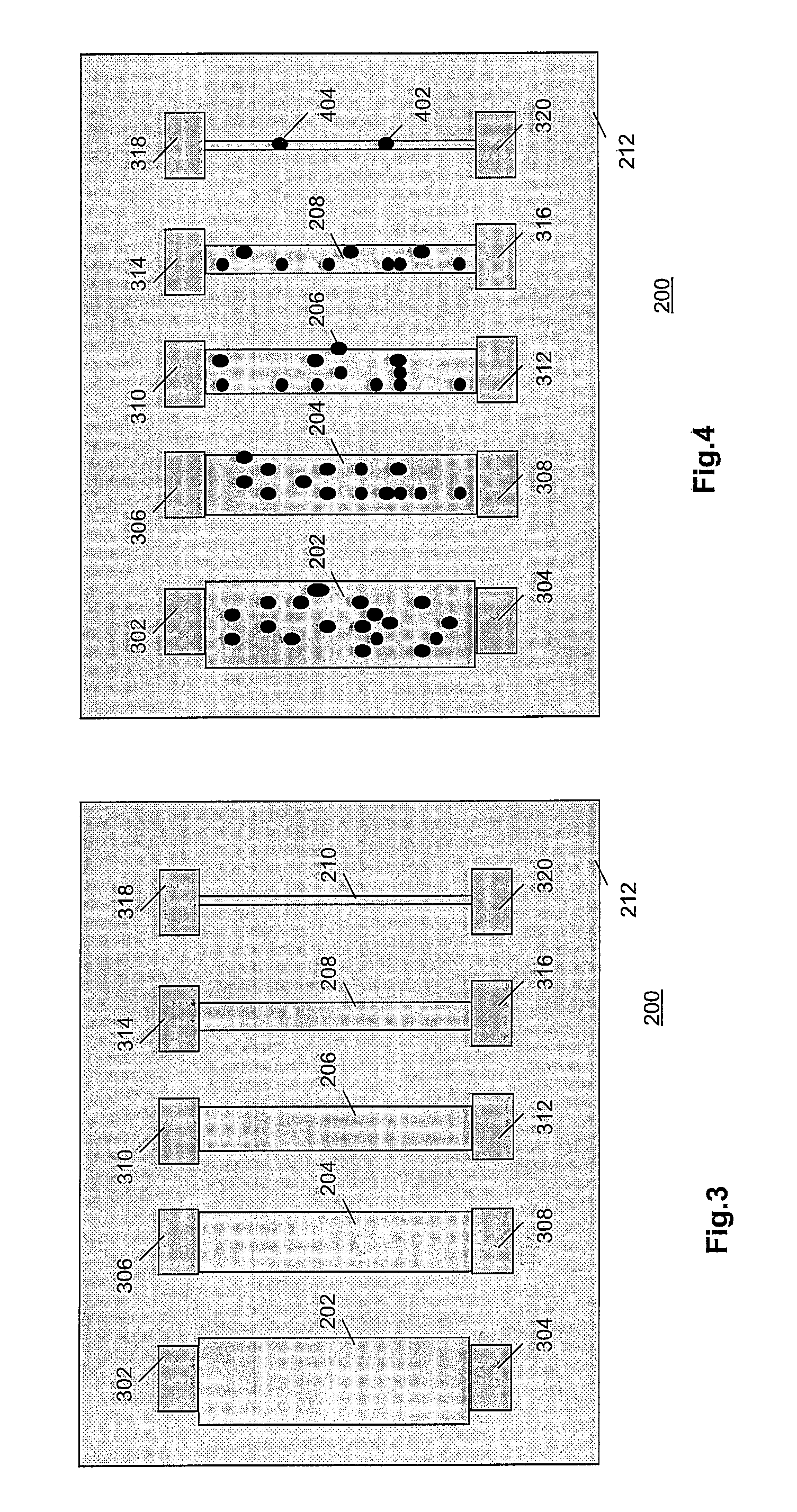Humidity sensor based on progressive corrosion of exposed material
a technology of humidity sensor and exposed material, applied in the field of electronic circuits, can solve the problems of material to thin, metal surface continues to thin until nothing remains, corrosion is dependent on moisture content, etc., and achieves the effect of ensuring the flawless operation of the integrated circuit and relatively easy control of general corrosion
- Summary
- Abstract
- Description
- Claims
- Application Information
AI Technical Summary
Benefits of technology
Problems solved by technology
Method used
Image
Examples
Embodiment Construction
[0028]FIG. 1 is a diagram 100 showing the relationship between corrosion rate (in percentages) and relative humidity (in percentages), measured for a temperature between, say, 20°-30° C. The diagram is based on the publication of Lin and Zhang mentioned above. The dependence is roughly linear over the range of relative humidity.
[0029]FIG. 2 is a diagram of an array 200 of differently sized strips 202, 204, 206, 208 and 210 of a material sensitive to corrosion for use in a humidity sensor according to the invention. Strips 202-210 are formed on a substrate 212. Typically, array 200 is manufactured in a semiconductor process, e.g., CMOS, using lithographic exposure and dry-etching, on substrate of a semiconductor material, e.g., silicon. The material that forms strips 202-210 comprises, e.g., a metal that is conventionally deposited in such a process to form interconnects. Preferably, the spaces between strips 202-210 are filled with another material (not shown) that is much less sens...
PUM
| Property | Measurement | Unit |
|---|---|---|
| corrosive-sensitive | aaaaa | aaaaa |
| impedance | aaaaa | aaaaa |
| corrosive | aaaaa | aaaaa |
Abstract
Description
Claims
Application Information
 Login to View More
Login to View More - R&D
- Intellectual Property
- Life Sciences
- Materials
- Tech Scout
- Unparalleled Data Quality
- Higher Quality Content
- 60% Fewer Hallucinations
Browse by: Latest US Patents, China's latest patents, Technical Efficacy Thesaurus, Application Domain, Technology Topic, Popular Technical Reports.
© 2025 PatSnap. All rights reserved.Legal|Privacy policy|Modern Slavery Act Transparency Statement|Sitemap|About US| Contact US: help@patsnap.com



